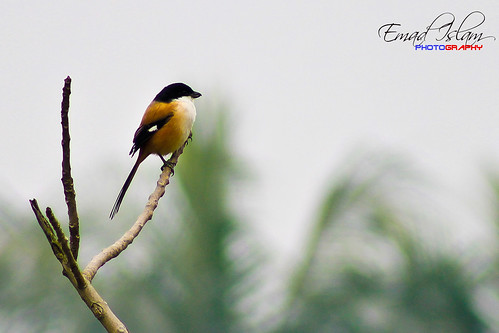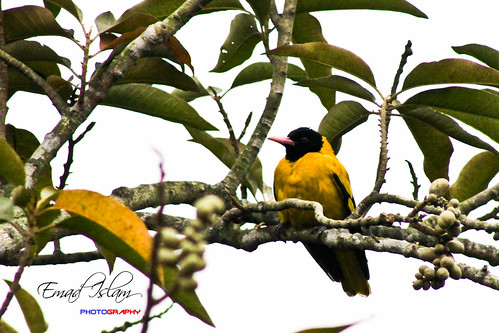কসাই পাখি বা বাঘটিকি, ছোট আকারের একধরনের র্দুদান্ত শিকারী পাখি। কসাই পাখি বাংলাদেশের সব জায়গায় কম-বেশি দেখা যায়।কসাই পাখি দেখতে ছোট। এদের অনেক প্রজাতি রয়েছে। বাংলাদেশে এর কয়েকটি প্রজাতি রয়েছে। প্রত্যেকটির রং ও রূপ আলাদা। একটির লেজ কিছু কালো, অন্যটির মাথা ধুসর রংয়ের। তবে সব কসাই পাখি প্রজাতির বৈশিষ্ট্য কালো মাথা ও ঠোঁট। কালো ডানার উপর সাদা ছাপ, ধুসর ও হলুদ। তবে এদের মধ্যে বাদামী রংয়ের কসাই পাখি বাংলাদেশের খুবই পরিচিত পাখি।কসাই পাখি শীতকালে বেশি দেখা যায়। এরা বনে বাস করে না। এরা বনের বাইরে থাকে এবং মুক্ত প্রাঙ্গন, ঝোপের বাইরে বসে শিকার করে। কসাই পাথি গ্রীষ্ম-বর্ষায় ডিম পাড়ে।
The Long-tailed Shrike or the Rufous-backed Shrike (Lanius schach) is a member of the bird family Laniidae, the shrikes. It is a common resident breeder throughout the Indomalayan ecozone from Kazakhstan, through Afghanistan, Pakistan, Indian peninsula except eastern states, to New Guinea, found on bushes in scrubby areas and cultivation. Winter visitor to southern areas such as southeast India and Sri Lanka.
It has some resemblances to the grey shrikes, such as the Southern Grey Shrike, Lanius meridionalis, sharing the pearl grey head and mantle and black mask extending from the forehead, through the eye, to the ear coverts. An eastern race found in Bhutan to Arunachal Pradesh, sometimes called the Himalayan L. s. tricolor, has a black head extending from the eye mask to the whole crown and nape.It is small for a grey shrike, but has a very long tail with rufous edges. The underparts are white, but with rufous flanks. The bill and legs are nearly black.
This bird has a characteristic upright "shrike" attitude perched on a bush, from which it sallies after lizards, large insects, small birds and rodents. This species of bird is a popular pet in southeast Asia.Prey may be impaled upon a sharp point, such as a thorn. Thus secured they can be ripped with the strong hooked bill, but its feet are not suited for tearing.Its flight is undulating, but its dash is straight and determined.
The Long-tailed Shrike or the Rufous-backed Shrike (Lanius schach) is a member of the bird family Laniidae, the shrikes. It is a common resident breeder throughout the Indomalayan ecozone from Kazakhstan, through Afghanistan, Pakistan, Indian peninsula except eastern states, to New Guinea, found on bushes in scrubby areas and cultivation. Winter visitor to southern areas such as southeast India and Sri Lanka.
It has some resemblances to the grey shrikes, such as the Southern Grey Shrike, Lanius meridionalis, sharing the pearl grey head and mantle and black mask extending from the forehead, through the eye, to the ear coverts. An eastern race found in Bhutan to Arunachal Pradesh, sometimes called the Himalayan L. s. tricolor, has a black head extending from the eye mask to the whole crown and nape.It is small for a grey shrike, but has a very long tail with rufous edges. The underparts are white, but with rufous flanks. The bill and legs are nearly black.
This bird has a characteristic upright "shrike" attitude perched on a bush, from which it sallies after lizards, large insects, small birds and rodents. This species of bird is a popular pet in southeast Asia.Prey may be impaled upon a sharp point, such as a thorn. Thus secured they can be ripped with the strong hooked bill, but its feet are not suited for tearing.Its flight is undulating, but its dash is straight and determined.


